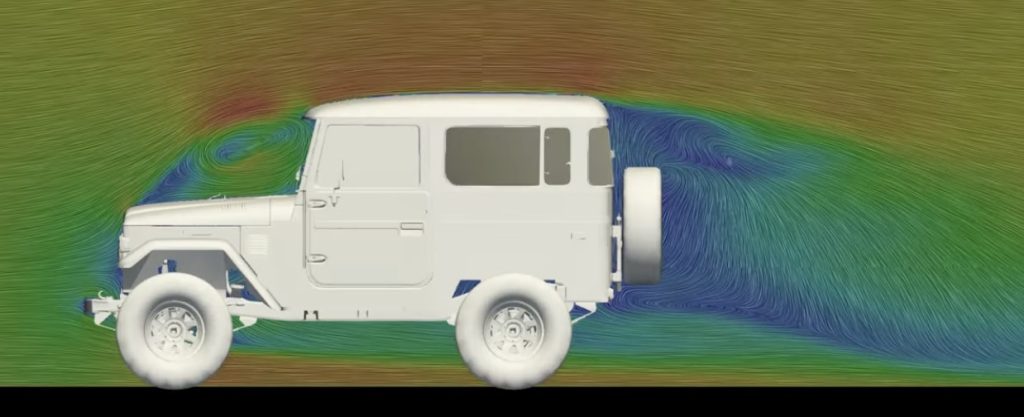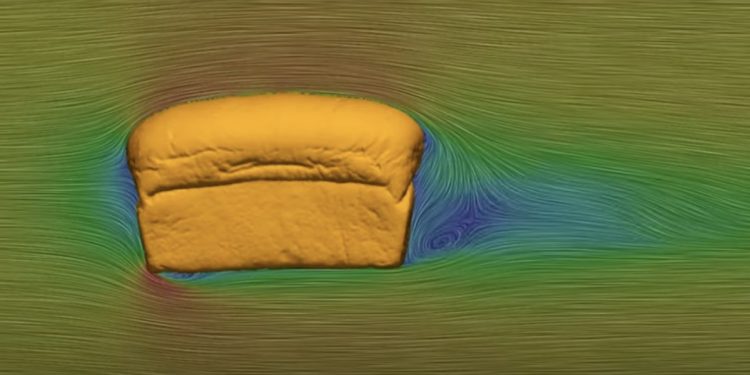40-Series toasted by bread in aero test
A recent aerodynamic comparison has produced an unexpected result: a classic Toyota Land Cruiser 40-series has a higher drag coefficient than a simple loaf of bread. The findings, revealed by YouTube channel Premier Aerodynamics, were obtained through Computational Fluid Dynamics (CFD) testing—a method commonly used in professional aerodynamic design.
According to the data, the bread loaf recorded a drag coefficient of 0.57, compared to the Land Cruiser’s 0.66. This means the classic four-wheel drive faces greater resistance as air flows around it. The experiment also found the Land Cruiser generated around 52 pounds of lift at 45 mph, whereas the loaf remained virtually lift-free. While the bread’s rounded top helps the airflow remain attached, the boxy silhouette of the 40-series Toyota struggles to manage airflow efficiently.

It’s worth noting that the 40-series Land Cruiser was designed for rugged off-roading rather than aerodynamic excellence. Its high ground clearance, exposed undercarriage, and upright structure are all beneficial off-road, but less helpful when it comes to slipping through the air. Nevertheless, it remains a popular choice for motorists seeking a sturdy, reliable vehicle—particularly for New Zealand’s challenging terrain.
Though few people will be comparing cars to bread in their day-to-day lives, this tongue-in-cheek CFD study provides an interesting reminder that aerodynamics are often about compromise. For serious off-road capability, the Land Cruiser stands out, even if it can’t compete with something as humble as a loaf of bread in the wind-tunnel test.





